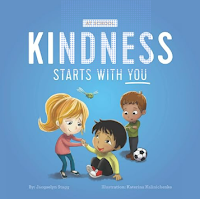Teaching students to choose kindness is an essential aspect of character education. Kindness fosters a positive and supportive environment, encouraging empathy and respect among students. Here’s a friendly guide to help you teach the importance of choosing kindness in your classroom.
1. Explain What Kindness Means
Begin by explaining the concept of kindness. Help students understand that kindness involves being friendly, generous, and considerate towards others. Emphasize that small acts of kindness can make a big difference in someone’s day.
Example Explanation: "Kindness means being nice to others, helping them, and showing that you care. It can be as simple as a smile, a kind word, or helping someone in need."
2. Share Stories and Examples
Use stories and examples to illustrate the power of kindness. Share books, videos, or personal anecdotes that highlight acts of kindness and their positive impact. Discuss how these acts made a difference in the lives of others.
Example Story: "One day, a student noticed a classmate who was sad because they lost their favorite pencil. The student offered to share their own pencil, which made the classmate feel much better. This small act of kindness brightened their day."
3. Teach the Benefits of Kindness
Discuss the benefits of kindness, both for the giver and the receiver. Explain how kindness can improve mood, build friendships, and create a positive classroom atmosphere. Emphasize that kindness can lead to a chain reaction, inspiring others to be kind as well.
Example Discussion Points:
- How do you feel when someone is kind to you?
- How does it feel to be kind to others?
- What changes do you notice in the classroom when everyone is kind?
4. Model Kindness
As a teacher, model kindness in your interactions with students and colleagues. Show how to be kind through your words and actions. Your behavior sets a powerful example for your students to follow.
5. Encourage Random Acts of Kindness
Promote random acts of kindness in the classroom. Encourage students to look for opportunities to be kind without expecting anything in return. Create a kindness challenge or a kindness jar where students can write down and share their acts of kindness.
Example Activity: "Each week, let's see how many acts of kindness we can do. Write down your kind acts and put them in our Kindness Jar. At the end of the week, we'll read them and celebrate our kindness!"
6. Use Role-Playing Activities
Role-playing activities help students practice kindness in different scenarios. Create situations where students can act out kind responses, such as comforting a friend, sharing supplies, or including someone in a game. This practice helps them feel more comfortable being kind in real-life situations.
BOOK LIST:
7. Incorporate Kindness into Classroom Routines
Integrate kindness into daily classroom routines. Start the day with a kindness pledge, have a kindness corner with inspirational quotes, or dedicate time each week to discuss ways to be kind. Regular reminders help reinforce the importance of kindness.
8. Celebrate Kindness
Acknowledge and celebrate acts of kindness in your classroom. Highlight students who go out of their way to be kind and recognize their efforts. Use specific praise to reinforce kind behavior.
Example: "Thank you, Mia, for helping your classmate pick up their books when they fell. Your kindness made their day better and showed great teamwork!"
9. Teach Empathy and Understanding
Empathy is closely linked to kindness. Teach students to put themselves in others' shoes and understand how they might feel. Use discussions, literature, and activities to help students develop empathy and recognize the importance of being kind.
10. Create a Kindness Contract
Develop a kindness contract as a class. Have students brainstorm ways to be kind and write them down in a collective agreement. Display the contract in the classroom as a reminder of their commitment to choosing kindness.
Example Kindness Contract:
- We will use kind words and actions.
- We will help others when they need it.
- We will include everyone in activities.
- We will listen and show respect to each other.
11. Involve Families in Promoting Kindness
Share your strategies for teaching kindness with families. Provide tips and resources for reinforcing these concepts at home. Consistent messaging between home and school helps students understand and practice kindness more effectively.
Tips for Families:
- Encourage children to share kind acts they did or received each day.
- Participate in family volunteer activities.
- Model kind behavior in everyday interactions.
By teaching students to choose kindness, you help them develop essential social skills that will benefit them throughout their lives. Kindness fosters a positive and inclusive classroom environment, creating a community where everyone feels valued and respected.





No comments:
Post a Comment